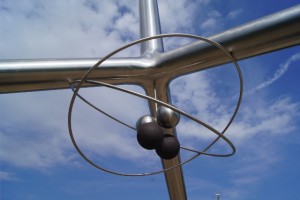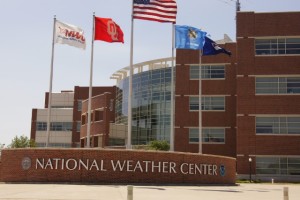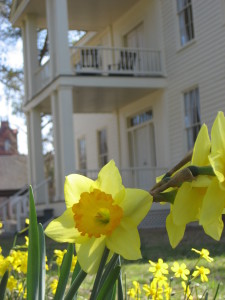How about a visit to Tulsa, Oklahoma? Spring break is always a good time for a road trip. 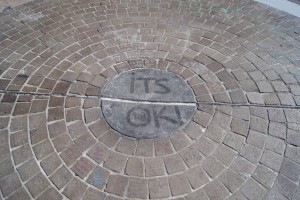 You can travel to the Center of the Universe, spend the afternoon at an oil tycoon’s home, and visit one of the world’s tallest freestanding statues. Those are just some of the adventures waiting for you in Tulsa, Oklahoma.
You can travel to the Center of the Universe, spend the afternoon at an oil tycoon’s home, and visit one of the world’s tallest freestanding statues. Those are just some of the adventures waiting for you in Tulsa, Oklahoma.
The second largest city in Oklahoma, Tulsa comfortably combines the sublime with the absurd. Beautiful art deco buildings grace the downtown area. However, there appears to be no city zoning logic with hotels, strip malls and residential neighborhoods clustered together throughout the city. This eclectic building mix gives the city personality and character.
Tycoon’s Mansion – The Philbrook Museum
Waite Phillips, oilman and business entrepreneur, donated his 72-room mansion to the City of Tulsa in 1938 for an art museum. The mansion, designed in Italian Renaissance style, is as much fun to explore as the art collection it houses. You’ll find an excellent exhibit of European art.
Perhaps most intriguing is the museum’s Native American collection. Park any preconceptions you have of Native American art at Philbrook’s front door and enjoy the exhibit’s vast diversity of expression and style. For three decades (1946 – 1979), Philbrook hosted an annual, juried show of Native American artists. Philbrook’s collection was, in part, built from these events. The Philbrook (2727 S. Rockford) is closed on Mondays and major holidays.
Hungry? Just south of the Philbrook Museum on Peoria Avenue you’ll find a several dining options. Charleston’s (3726 S. Peoria) serves an awesome chicken fried steak in a casually upscale dining room. Weber Root Beer Stand (3817 S. Peoria) is the place for root beer (in a chilled glass) and a burger.
Quirky Salute to Tulsa’s Oil Heyday – The Golden Driller
No visit to Tulsa is complete without a visit to the 76-foot tall Golden Driller statue located on the edge of the Tulsa Fairgrounds (4145 E. 21st). Purported to be one of the tallest, freestanding statues in the world, the Golden Driller is made of steel and concrete. He stands as a tribute to the days when Tulsa was known as the “Oil Capital of the World.”
The Golden Driller truly is impressive and well worth a photo. His right arm rests on an actual oil derrick. In 2011, the statue received a facelift courtesy Tulsa based Bill Haynes Co. who applied a special, protective coating to preserve the statue.
The Wild Side — Tulsa Zoo
I confess. I love a great zoo. The Tulsa Zoo and Living Museum (6421 E. 36th) may not be the largest city zoo, but it does have an impressive variety of animals and exhibits. Be sure to take advantage of numerous zoo demonstrations and talks. Our family enjoyed the antics of the California sea lions: Briney (female, age 26) and Dorsey (male, age 19). The geriatric pair of sea mammals works for their living, putting on demonstrations for visitors twice daily.
The Children’s Zoo has the standard corral with sheep and goats for the kids to pet. But here’s the twist, the Children’s Zoo also has a collection of antique animals like the Highland cow and Jacob’s sheep. That’s right, Tulsa Zoo has domestic animals facing extinction as they are being replaced by new farm breeds.
Tulsa Zoo continues to renovate with new exhibits designed so that visitors experience both animal and their habitat. The Tropical Rain Forest transports you to a humid South American and the newly renovated Wildlife Trek recreates forest, desert and aquatic habitats.
The Tulsa Zoo is open 9 am to 5 pm year round (closed Christmas day).
Uncanny — The Center of the Universe
Part of Tulsa’s charm is its unique ambience. And nothing is more eerily unusual than standing in the Center of the Universe. According to the Tulsa Library website, “The ‘center’ is a worn concrete circle, 30 inches in diameter, in the middle of a 13 row circle of bricks. . . located at the apex of a rebuilt span of pedestrian bridge, originally built in the 1930s.”
Stand in the center of the circle and talk. You, but no one else around you, will hear the echo of your voice. It does almost feel like you’re speaking into a hole in the universe. Weird right?
The Center of the Universe is located on the Boston Avenue pedestrian overpass between First and Archer Streets. And, yes, the Bank of Oklahoma (BOK) building opposite the overpass does look a lot like the former World Trade Center. The World Trade Center (built 1973) and the BOK Tower (built in 1975) were designed by the same architect.
While downtown, enjoy the mix of architecture. Tulsa is famous for its Art Deco buildings constructed during the height of the oil boom. Of national note is Boston Avenue Methodist Church built in the 1920s (1301 S. Boston).
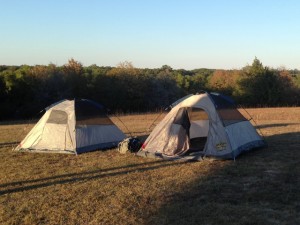 The spring floods closed many local camping spots. However, you can still camp at two, city-run parks. Erwin Park is best suited for those who want a more rugged camping experience, and Little Elm Park works well for families with small children.
The spring floods closed many local camping spots. However, you can still camp at two, city-run parks. Erwin Park is best suited for those who want a more rugged camping experience, and Little Elm Park works well for families with small children.
